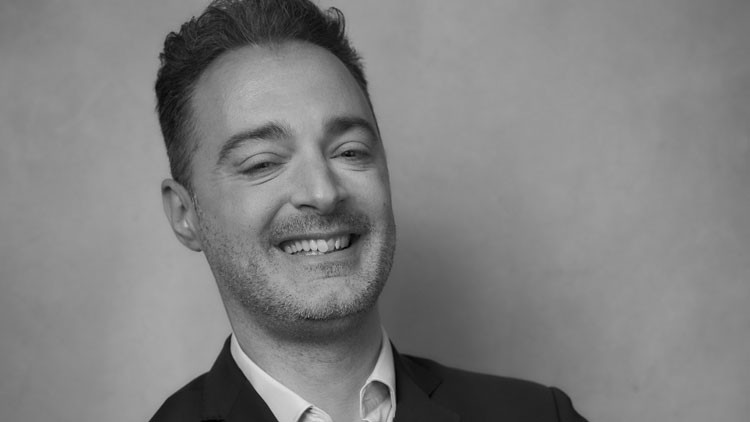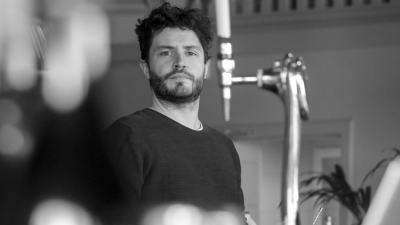Uncorked: Enzo Russomanno

Tell us about the moment you first became interested in wine
I come from a little town in Campania where everyone has or at least used to have a little vineyard to produce wine for family consumption. We have always made wine, going back for generations on some sides of my family. I still remember helping my dad when I was seven years old pressing the grapes to make white wine. I was just a kid but when I drank the fresh grape juice coming out of the press, for me it was the most delicious thing I’d ever tried. Then as a grown up, I kept enjoying that juice in the fermented version that we all know with family and friends.
Tell us about your wine list at Luca
It is rooted in the most iconic producers as well as lesser-known winemakers, showcasing a broad range of styles from more traditional methods to low intervention. We take pride in serving some of Italy’s greatest wines such as Valentini and Soldera, and we have a fantastic selection of different communes of Barolo, such as Serralunga d’Alba. We love collecting multiple vintages from the same producer; it really offers something special to our guests when they can return and try a new vintage from a winemaker like Giuseppe Mascarello or Giacomo Conterno.
Over the course of your career, have you had any wine-related disasters?
Who hasn’t ever broken a bottle of wine? Unfortunately, sometimes it happens. Long story short, one day there was a power shortage and obviously there was no light in the cellar, but as a young sommelier I was determined to finish my wine delivery. I tripped and dropped a mixed case. A bottle was broken. I just hoped it wasn’t that ‘one’. Just my luck, out of nine bottles, the broken one was a single bottle of Romanée St. Vivant, Domaine Leroy 1996. I still feel bad recalling that experience and to this day that was the most incredible aroma I ever smelled from a wine. I just wished it was coming from a wine glass, not the cellar floor.
Name your top three restaurant wine lists
Enoteca Turi, Noizé and Noble Rot (all in London).
Who do you most respect in the wine world?
I have the utmost respect for winemakers. It is easy to drink a bottle of wine and judge something that we do not like but sometimes we forget how much work and dedication has gone into the process of making every bottle.
What’s the most interesting wine you’ve ever come across?
The wines that I still have to taste. I am always excited when I have to try a new wine, everything interests me.
What are the three most overused tasting notes?
Mineral, natural and young.
What’s the best value wine on your list at the moment?
A white wine called Rayon from La Cave du Vin Blanc de Morgex et de la Salle in Valle d’Aosta (a tiny region in North West Italy). It is made with Prié Blanc, which is cultivated at an altitude of 1,300 meters, at the foot of Mont Blanc on the border between Switzerland and Italy. These are the highest vineyards in Europe and Prié Blanc is an extremely ancient grape. Today, the grapes are cultivated under stone pergolas that are a legacy from Roman viticulture. The vine owes its strength to its resistance to low temperatures; it is actually common to see the vines covered with snow and ice at harvest time.
What is your ultimate food and drink match?
Oysters and Vin Jaune. Contrary to the popular trend of pairing oysters with Champagne, the two don’t go well together in my opinion. Sometimes, they result in a metallic taste on the palate. Instead, I would suggest Savagnin (a grape from the Jura region in eastern France). Vin Jaune (French for yellow wine) is a special type of white wine made with this grape. It is similar to a fino Sherry and gets its character from being matured in a barrel under a film of yeast, known as the voile, on the wine’s surface. Vin jaune has a lot of similarities to Sherry, including some aromas, but unlike Sherry, it is not a fortified wine. The salinity of the Vin Jaune and the iodine flavour of the oysters are a great match.
Old World or New World?
Old World, but also New World wine producers that use new technologies but pay homage to Old World tradition and techniques.
What is your pet hate when it comes to wine service in other restaurants?
Pouring too much wine into a glass. At a good, wine-focused restaurant with sommeliers, they will pour you the right amount so that you can appreciate the flavours and aromas better.
Who is your favourite producer at the moment and why?
Marco De Bartoli. Marco was considered a pioneer in Sicilian winemaking for his long-standing commitment to the native Sicilian white grape varieties, Grillo and Zibibbo. He has been succeeded by his sons, who are continuing his tradition of producing wines from two separate estates: the first in Marsala, in Sicily’s south-west corner, and the other on the small island of Pantelleria, south-east of Sicily. Their belief in producing the wine using traditional methods is complemented by an equally strong belief in Sicily’s future as one of Europe’s most vital viticultural areas.
As a sommelier, what question do you most get asked by customers?
It is about the grape broach I have on the lapel of my jacket. People ask whether it is to show that I have a wine qualification or that I belong to a sommelier association. To me, it simply shows that I am the person in the restaurant who is enthusiastic about wine, wants to talk to you about it and is committed to its service. Wine certifications are a good thing to pursue, but I think the most important things are your commitment to your own study to constantly keep your knowledge up to date, and your curiosity to always be tasting new wines.
Which wine producing region or country is currently underrated at the moment and why?
There are a lot of wine regions in Europe that are worth a mention: Switzerland and the wines of the Valais; Greece and its many islands, like Naoussa, for instance, or the Assyrtiko white grape which makes fabulous dry wines. There are also some regions in Italy which deserve more attention, such as Valle d’Aosta for both white and reds, and Southern Italy with Campania (Fiano di Avellino and Taurasi), Basilicata (Aglianico del Vulture) and Calabria (Cirò).
It’s your last meal and you can have a bottle of any wine in the world. What is it and why?
A bottle of Henri Jayer Vosne-Romanée Cros Parantoux. Henri Jayer was an icon in Burgundy winemaking during the second half of the 20th century, and his wines were influential in establishing the uniqueness of Cros Parantoux. The two-hectare plot that Jayer had was located in the upper part of Vosne-Romanée, right above the Grand Cru Richebourg vineyard, and after some studies he decided to plant a particular variety of Pinot Noir. It is a Premier Cru that rivals the Grand Crus more than any other, a unicorn that sadly won’t be made again.






















